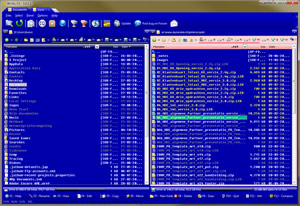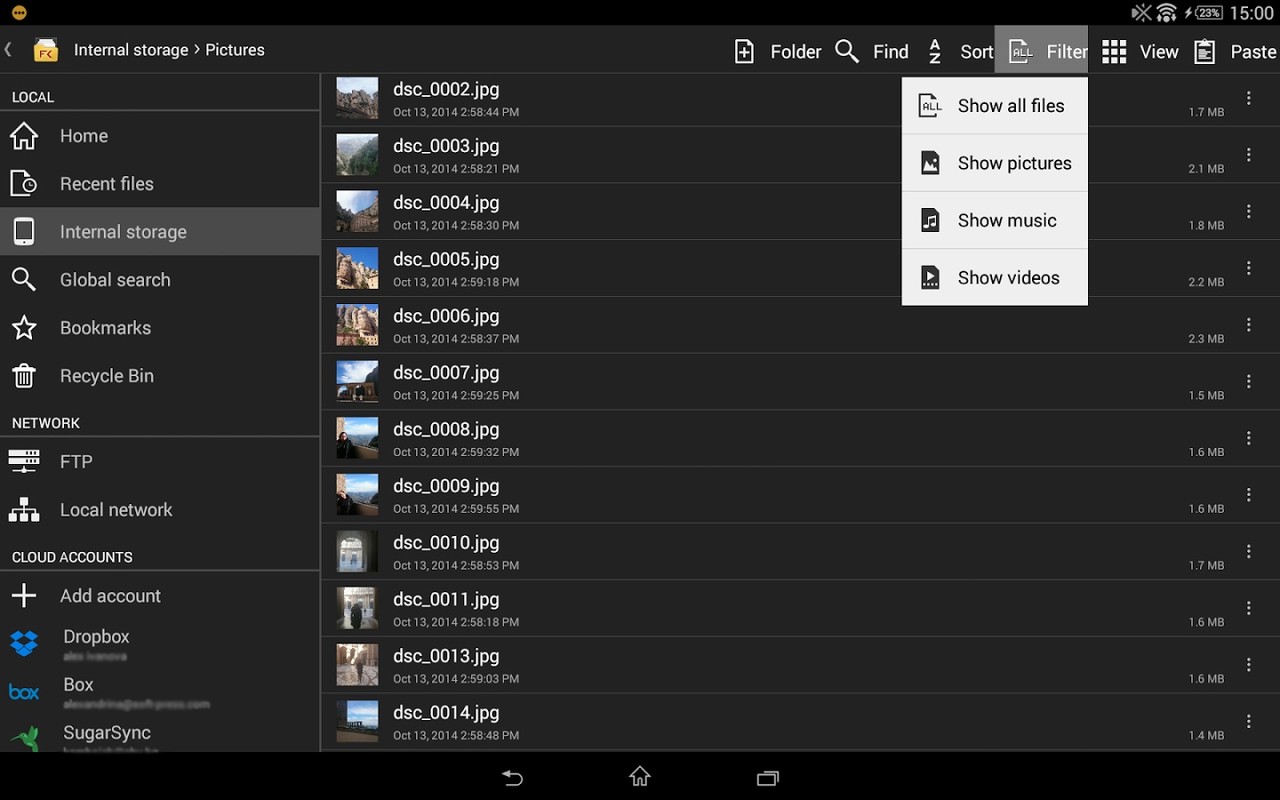

- XCOMMANDER FILE MANAGER INSTALL
- XCOMMANDER FILE MANAGER MANUAL
- XCOMMANDER FILE MANAGER PRO
- XCOMMANDER FILE MANAGER PLUS
- XCOMMANDER FILE MANAGER FREE
XCOMMANDER FILE MANAGER PRO
On my Macbook Pro 15 (2013), I usually get that behavior with certain USB cables, but only in connection with my Aura One. Try a different one and see if the device, considering that it is highlighted to appear in Finder, connects. If, however, your device does not appear anywhere even though it tells you it's connected, this suggests that weird issue that Kobos occasionally seem to have with some USB ports. So if you see your Kobo there, try what the others have described and see if external drives are highlighted to show in the Finder settings. Like some people already said, Disk Utility gives you a way to see all of your connected drives, regardless of whether they are enabled to show in Finder. My Mac has stopped recognizing my Kobo again (worked 2 or 3 times, then quit).Īnyone know of anywhere I might need to change settings for Sierra to see my Kobo? My Kobo is currently plugged in and the KA1 thinks it is connected.

I am new to Macs so I have a lot to learn.Īll I see is the Mac HD. If the problem persists it is likely hardware rather than the OS.
XCOMMANDER FILE MANAGER INSTALL
connect an external drive, install OSX on it. Which is mitigated by the knowledge that you wisely clone/backup each day and in a few minutes all will be well again.Īnother thought. Nothing concentrates the mind like a non stop blinking apple logo and the disastrous reality of one’s intrepid foray into roads unknown. On the other hand, you end up learning a great deal. Don’t tinker too much, or you will end up like me - having to restore a backup.
XCOMMANDER FILE MANAGER FREE
Try the free app tinkertool to do various checks. Switch off all power to the mac (remove plug from power point) and wait at least 5 minutes - assuming it is an iMac.Ĭheck the system logs for info - everything is logged. If you have ruled out cable issues, the next thing is to hard reset the computer. There are other similar file managers - dcommander, xcommander etc. This is a dual paned file manager that among many other options, has easy show/hide hidden files. There is a free version of Forklift in the mac app store. Many people end up frustrated with the Finder limitations. I expect that your finder preferences are set to show mounted devices? Your kobo may possibly be listed there in the usb port section, even if not showing on the desktop. All usb info is there, including details of connected devices. Access it either from the apple icon at top left corner of the desktop or applications/utilities. If you want to see details of hardware/software, you need to browse the system report.
XCOMMANDER FILE MANAGER MANUAL
Hope that helps! I'm a big fan of the Missing Manual series for the macOS written by David Pogue if you want to learn more.ĭisk utility gives a map of connected devices, provides simple partition repairs, allows the initializing, imaging and formatting of partitions and creation of encrypted folders. Your devices could be hidden from showing in the list. Place your mouse pointer to the right of the label Devices towards the edge of the gray bar and you should see a toggle that switches between Hide and Show. The last tip is that in the Finder window in the left-hand bar, you should see a category called Devices. You can drag this icon on top of the Trash Bin to "eject" the mounted drive when you are ready to disconnect. If this box is checked and your KA1 is properly connected (mounted), then you will see an icon of a disk drive on the desktop labeled KOBOeReader. Here you will see the option to check or uncheck a box to show External disks on your desktop. This will bring up the Finder Preferences (like settings/options in Windows) and select the General icon.
XCOMMANDER FILE MANAGER PLUS
When you have the Finder window open, press the Command key plus Comma key together. You should see categories in the left-hand bar for Internal (your hard drive) and External (mine says KOBOeReader) if your KA1 is proprerly recognized by your Mac. Hit enter to open the Disk Utility program. A quick way to search for any program, file name, contact, convert units, all kinds of things! Start to type Disk Utility and it will auto fill in the name. This is one of the most useful things to know about the Mac. Press the command key and space bar at the same time to bring up spotlight search.


 0 kommentar(er)
0 kommentar(er)
